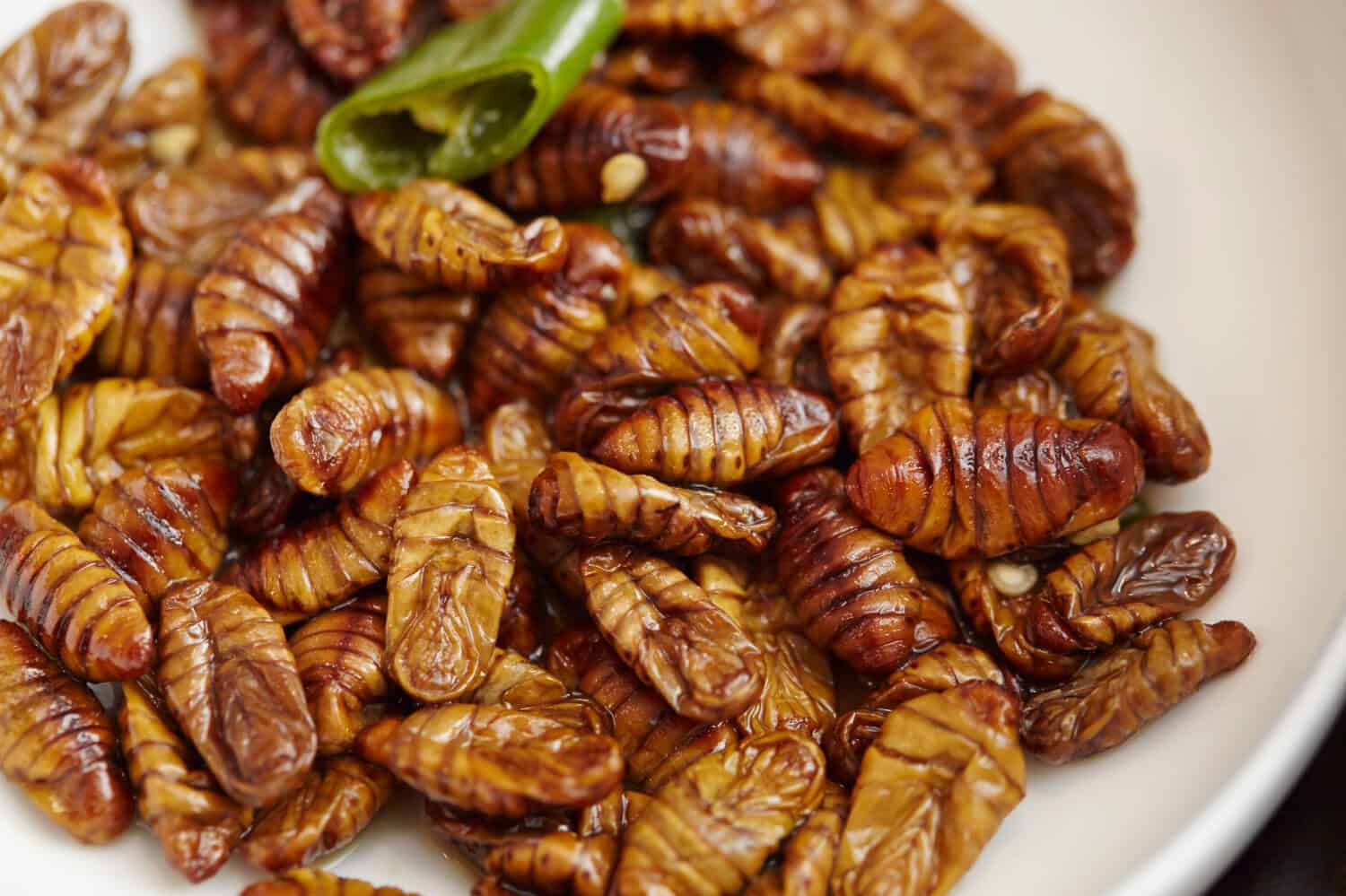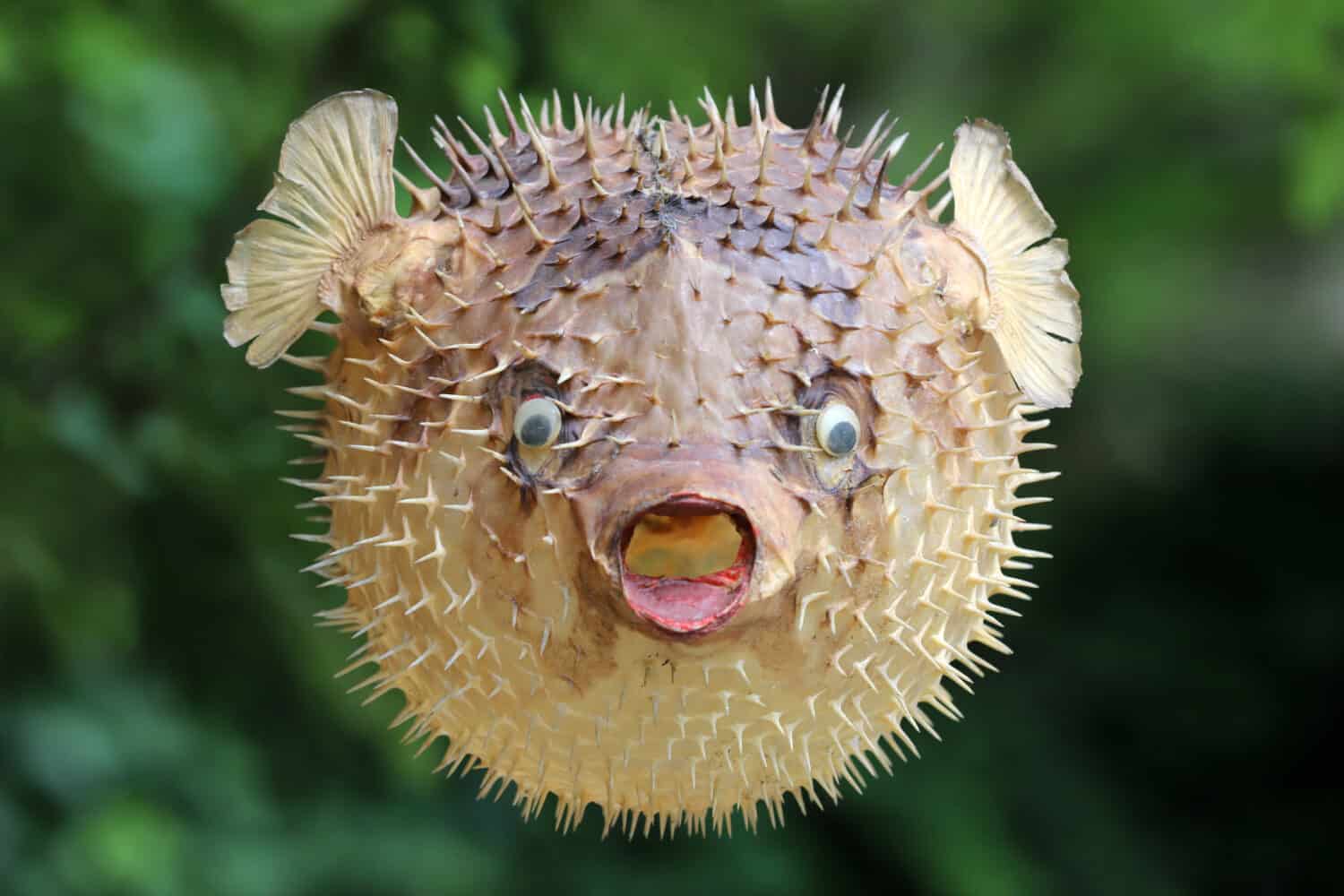Food is a crucial part of human culture. Not only do we need it to survive, but delicious food is also the cornerstone of many communities worldwide. However, some foods have unexpected and even critically dangerous consequences when prepared incorrectly. Some common foods in other cultures can even be risky when prepared correctly.
So, it’s essential to know the dangers of the foods you’re eating in case you experience any unintended side effects. While most foods carry the risk of potential food poisoning, some carry much more grave risks like organ failure and death.
Let’s examine some unique dishes you might not know carry risks when eaten.
To determine which foods have the most severe potential side effects, we first began by looking at unique foods associated with outbreaks of disease or illness. Then, we cross-referenced those outbreaks with information from medical journals, the CDC, and reputable clinics such as the Mayo Clinic to determine the real risk of these foods. (On a related note, here is a list of vegetables you should never eat raw.)
Pufferfish
Pufferfish, or fugu in Japanese, is one of the most dangerous foods you can eat. If you want to try this delicacy, you must travel to Japan, as pufferfish prepared outside Japan carries the most potent risk of poisoning. As you may know, the pufferfish is a poisonous fish with tetrodotoxin in its skin, eyes, liver, gonads, and intestines. Tetrodotoxin is a potent neurotoxin named for the tetraodontiformes that it is naturally found in. It’s primarily found in marine animals like pufferfish. However, some terrestrial animals wield tetrodotoxin as well.
Consuming pufferfish usually results in numbness of the mouth. It’s extremely difficult to prepare safely due to tetrodotoxin’s heat stability, meaning heating the affected meat doesn’t break down the toxin. Additionally, many Japanese chefs prepare pufferfish as sashimi, meaning the fish is raw. However, the Japanese have taken many steps to ensure that pufferfish consumption doesn’t result in the fatalities that got it banned from 1570 to 1870.
Firstly, pufferfish can only be prepared by a licensed chef in a licensed establishment in Japan. You can’t buy pufferfish and prepare it at home. Even the Japanese royal family must abide by these consumption rules. Should you desire pufferfish, you must seek the guidance of a chef trained to prepare the delicacy. There are many ways to eat pufferfish, such as raw, grilled, and in soup. However, ensure that you monitor your health after consumption just in case, since tetrodotoxin can kill you pretty quickly.
Blood Clams
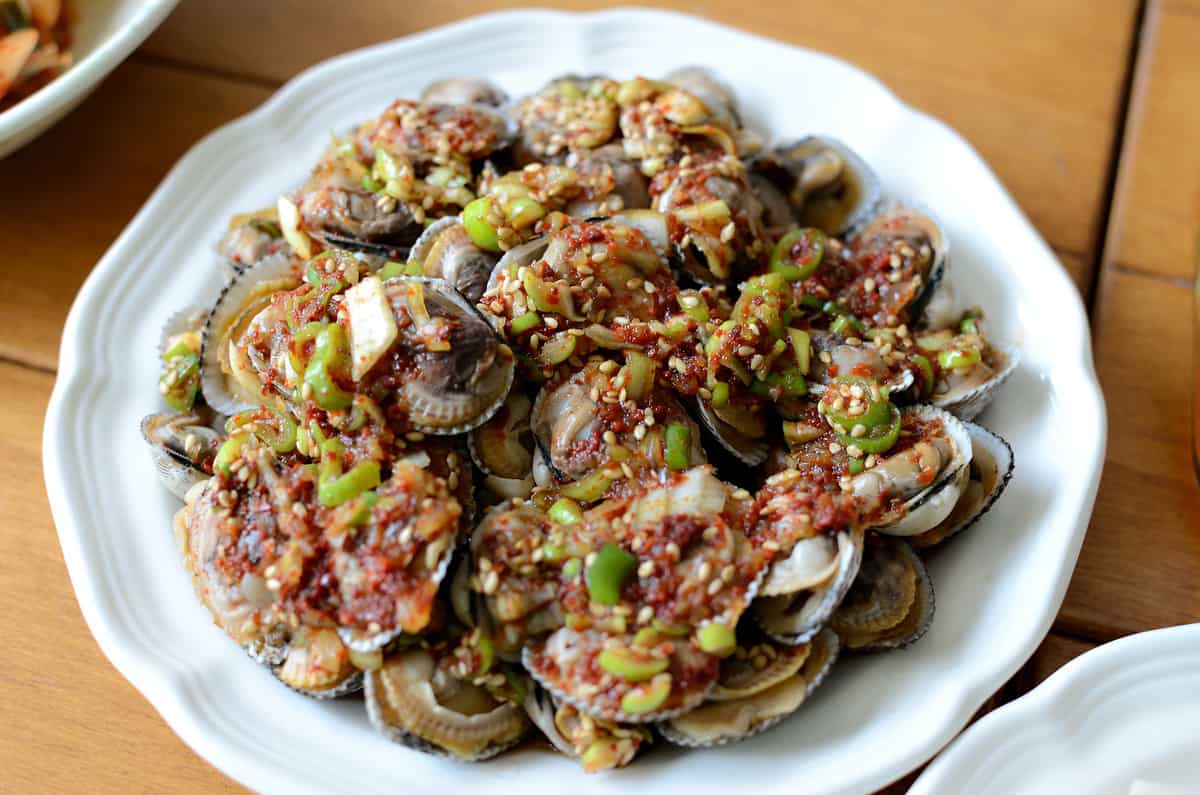
Blood clams are shellfish that contain an extremely high amount of hemoglobin, the protein that carries the oxygen in your bloodstream. As a result, the clams have a deep red color that makes them stand out among the shellfish at any table. However, this stunning shellfish can carry hepatitis A and has been responsible for several outbreaks in multiple countries, including Shanghai, China, and Busan, South Korea. As a result, several areas have banned the harvesting and consumption of blood clams to prevent further hepatitis A outbreaks.
A study done on the Busan, South Korean outbreak of hep A concluded that visitors of a Busan restaurant who had eaten salted clams around the time of the incident were 68.12 times more likely to have contracted hep A than those who had eaten something else at the restaurant. Of the 155 participants in the study, 5.4% of them tested positive for the virus. To be considered safe to eat, blood clams must be cooked at high temperatures to ensure that any harmful organisms, such as the hepatitis A virus, have been killed. However, many Asian blood clam recipes use raw clams, which increases the chance of contracting hepatitis A from them.
Without cooking the clams, there’s no way to remove the virus if it is present in the animal’s system, and eating it can cause the person to contract the disease. Ultimately, blood clams have been banned for consumption in many areas, including Shanghai and all of California, to prevent the spread of hepatitis A from the clams.
Beondegi
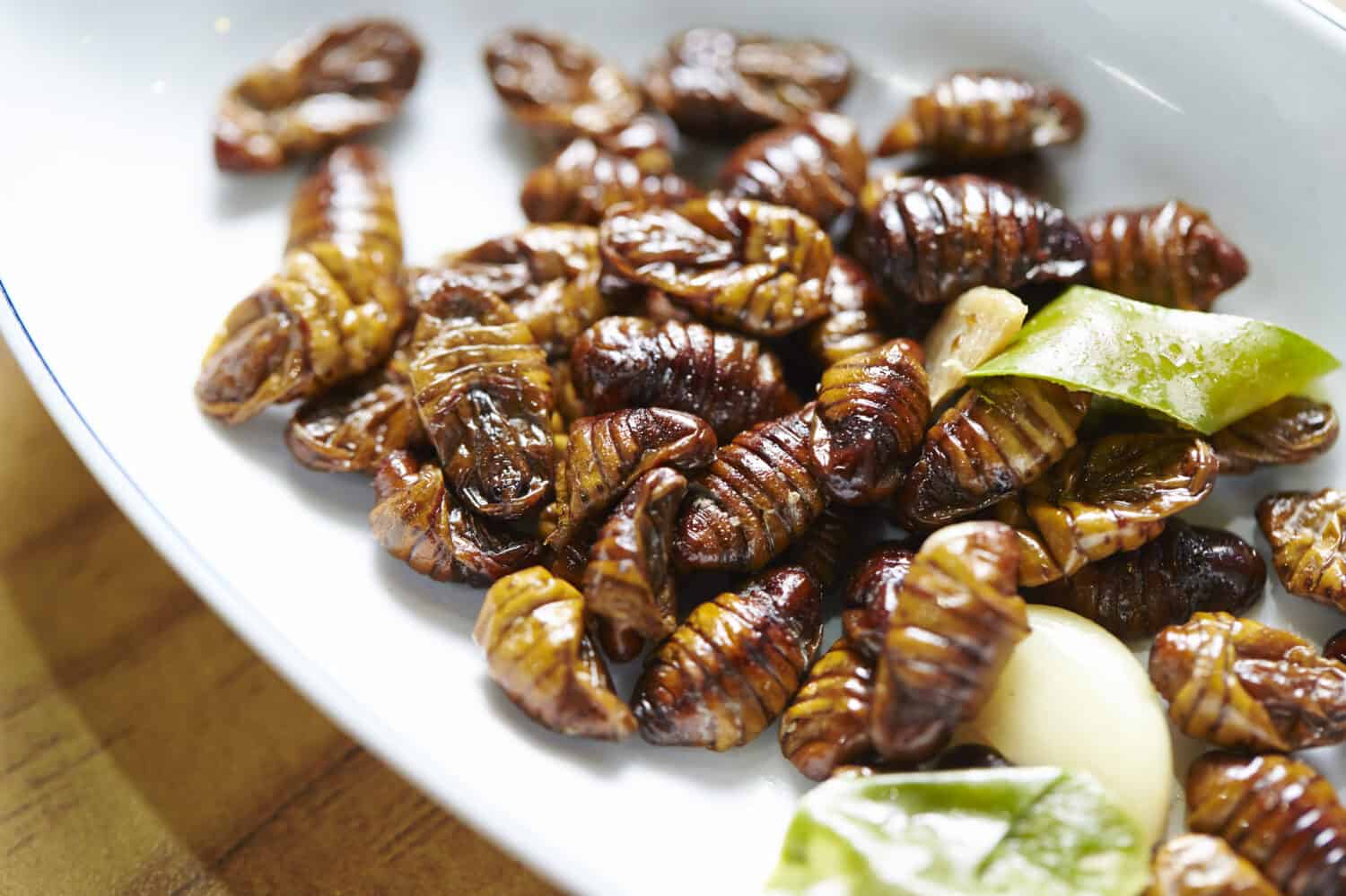
Beondegi means “pupa” in Korean and refers to the delicacy silkworm pupae. They’re prepared boiled or steamed and typically served in a cup with wooden toothpicks as skewers. Most people describe the taste of beondegi as “nutty” or “shrimp-like.” While many people might balk at the idea of eating insects, the Korean people love beondegi and they’re not the only ethnic group that eats insects regularly. In South Korea, you can also buy beondegi canned. People describe the smell of canned beondegi as being “like tire rubber,” which may be unappealing to some.
Consumption of silkworms is a relatively recent phenomenon in South Korea. However, in silk-farming villages, the practice dates back to at least the 1920s. In the poverty that followed the Korean War, many people began eating silkworms as a protein source and it became a staple of the time. Nowadays, they’re a popular snack food you can buy on the street in a paper cup.
Be careful when trying beondegi for the first time, though! Silkworm allergies are a possibility and they haven’t been studied the same way many other allergies have. The lack of literature on the allergy is partially because eating silkworms wasn’t a particularly widespread practice. So, there was no need to know if you were allergic to silkworms. Some people are allergic to the silk material, but that doesn’t necessarily mean they’re allergic to the silkworm animal. When beondegi became popular in South Korea, we had a sudden need to study and identify silkworm allergies as many people began eating them.
San-nakji
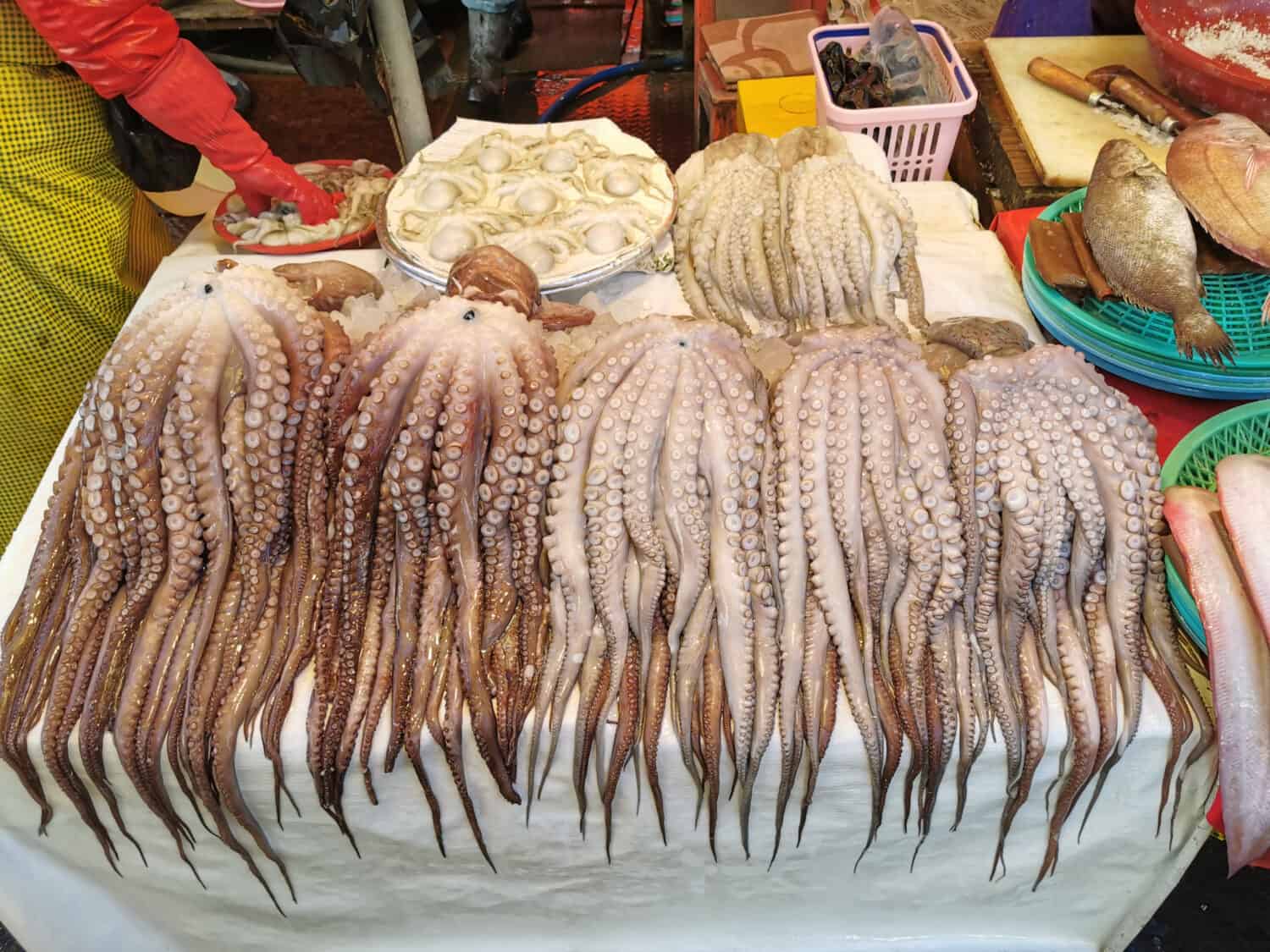
Most people are aware that eating raw meat has a risk, but what about live meat? San-nakji is a type of Korean raw dish or hoe that uses Nakji octopus, sometimes referred to as “baby octopus” since the animals are much smaller than the more commonly known Giant octopus. In most common day iterations, the octopus is killed shortly before butchering and serving it. In some rarer cases, a live octopus is eaten whole. However, due to the octopodes’ complex neurological system, the tentacles are still able to move and perform motor reflex actions without input from the brain.
Two-thirds of an octopus’s neurons are in localized clusters in the tentacles. Thus, even with the brain’s connection to the body severed, the tentacles will continue to move on the serving plate and while being eaten. This movement can be especially risky for people who have consumed alcohol before eating, as their motor skills may be impaired. The suction cups on the tentacles can adhere to the walls of the throat during consumption and choke the eater, which has resulted in several hospitalizations and even deaths in South Korea.
San-nakji is prepared with spices and sesame oil, the latter of which is meant to prevent the suction cups from sticking to the eater. However, there is still a risk of choking on the tentacles since they move and can get stuck in your throat while eating.
Kæstur Hákarl
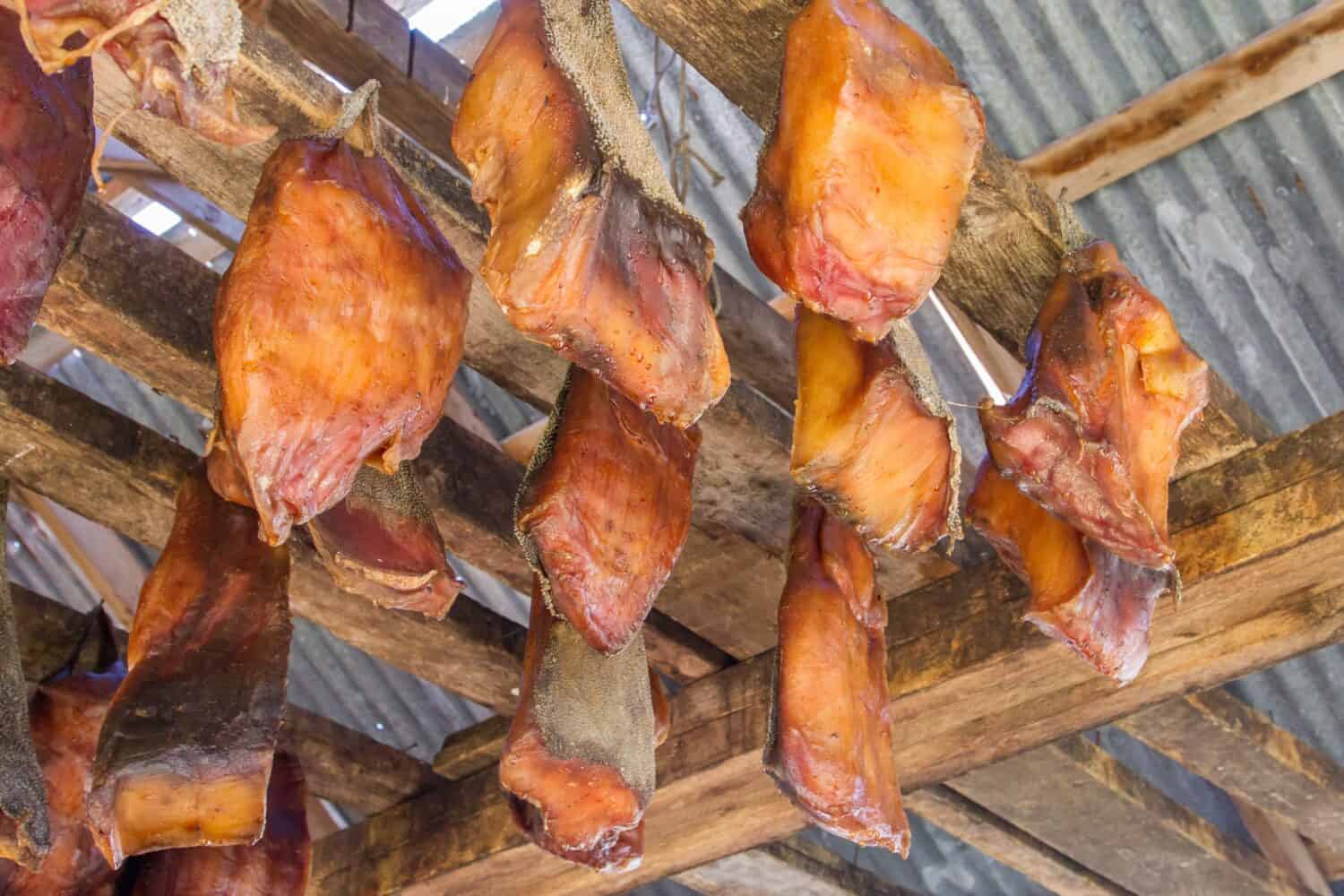
Kæstur Hákarl or Hákarl for short is an Icelandic delicacy that most people don’t like when they first try it; it’s an acquired taste because Hákarl is rotting, fermented shark meat. For those who don’t know, sharks don’t taste good. Most people describe a shark’s taste as strongly similar to urine. This taste is due to the high amount of urea in shark meat. While Hákarl uses a lengthy process to remove the presence of toxins like uric acid, a component of urea, it can still be present depending on the source. Even when not present, it leaves behind a noticeable and strong taste.
Hákarl has a few major risks that you should consider. One is the possibility of the presence of toxins in the meat, such as uric acid. Another is that even before considering that, Hákarl is known for causing vomiting. The meat is fermented and smells rancid. It doesn’t just smell rancid, either. It tastes rancid too because it is. Hence, Hákarl is definitely an acquired taste. Most people don’t pop out of the womb jonesing for a slab of rotten meat.
Additionally, hunting Greenland sharks is highly unsustainable. It takes around 150 years for a Greenland shark to reach sexual maturity and many of these creatures live for over 400 years. With such a long lifespan, their population doesn’t need to grow as fast as animals that live for a shorter time. Thus, they don’t mate as often, and hunting them will severely reduce their population since they aren’t reproducing as fast.
Lápé
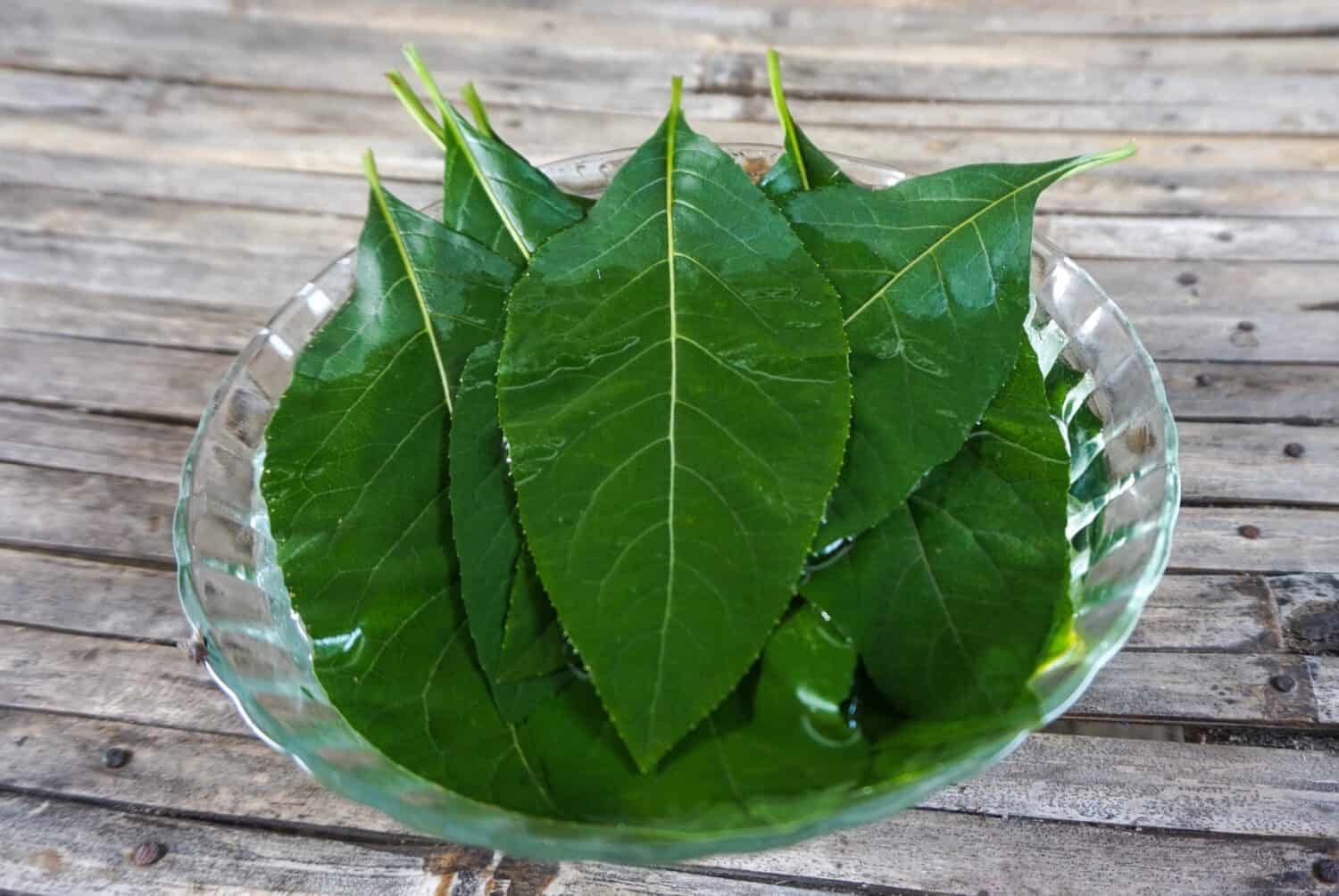
Lápé or “bitter leaf” is the colloquial name for the Cassava plant, an edible tuberous root. Cassava is typically ground up and eaten as flour. However, it has cyanogenic properties and can be responsible for severe cyanide poisoning, which can be fatal. Cassava must be detoxified before consumption to avoid fatal cyanide poisoning. However, this process is not always done correctly, which can leave people at risk when consuming products made with Cassava flour.
Due to the nature of the poisoning, outbreaks of cyanide poisoning caused by Cassava flour are rarely reported and described. This lack of reporting leads people to believe there are no risks to consuming Cassava flour and, thus, subsequent outbreaks. In September 2017, an outbreak of cyanide poisoning was reported and studied in western Uganda, where Cassava flour is common. The study concluded that improperly detoxified Cassava flour was the cause of the cyanide poisoning.
Cassava is the second most widely grown and consumed food in Uganda, after bananas. It is a staple source of carbohydrates for the Ugandan people. So, the CDC issued additional guidance for Ugandan Cassava farmers to emphasize the importance of strict adherence to the detoxification process of making Cassava flour.
Red Rice Yeast
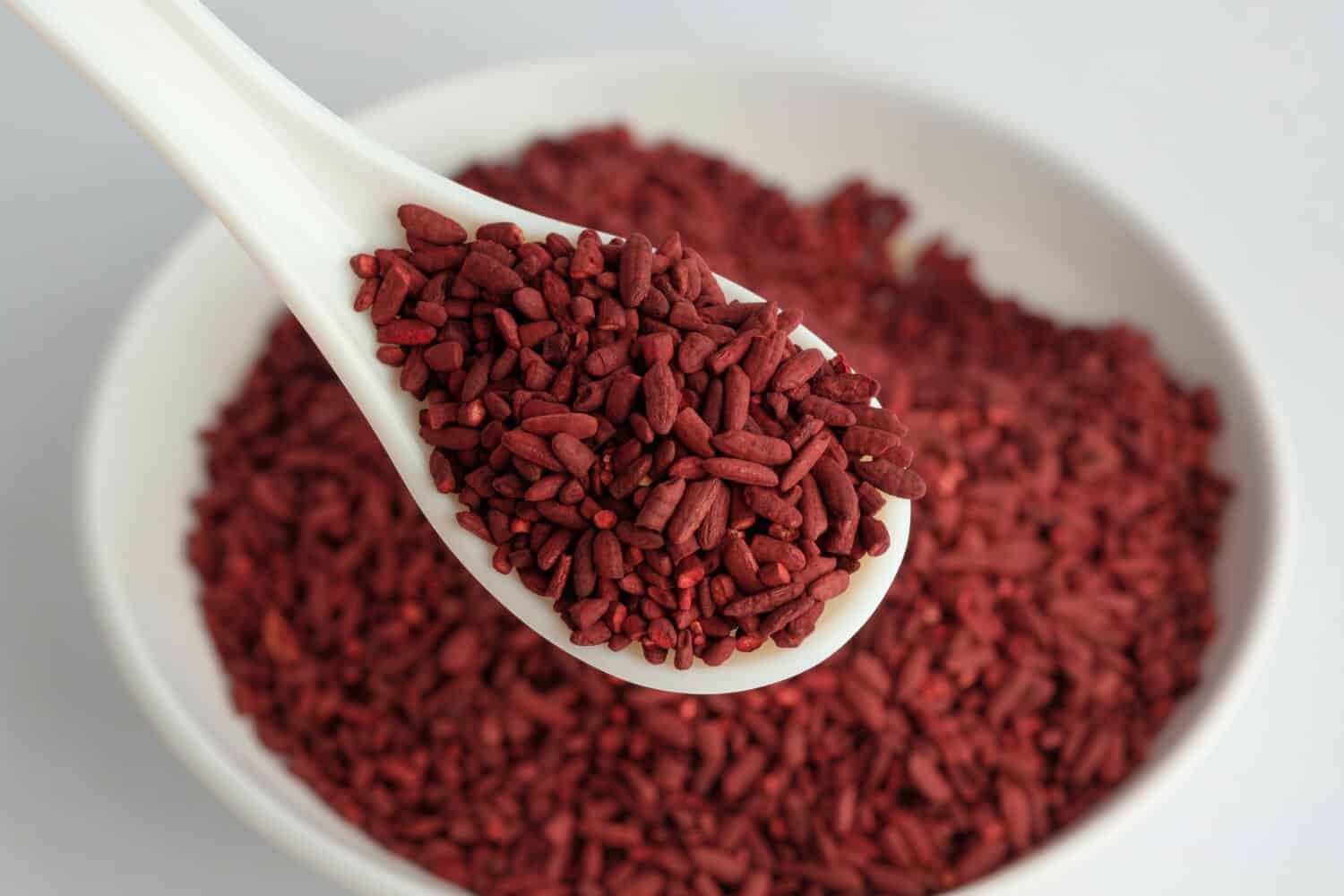
If you have high cholesterol, some people may suggest you try red rice yeast products. They are made by fermenting yeast on rice thought to contain high amounts of Monacolin K, a natural component of the drug Lovastatin, which slows cholesterol production in the human body. Red rice yeast can be taken as a supplement to lower cholesterol, blood glucose levels, and blood pressure alongside diet changes and weight loss regimens. However, these products aren’t always effective, and the effective ones aren’t always legal.
Red rice yeast can contain a harmful contaminant, citrinin. This compound can cause severe damage to the kidneys when introduced in high amounts. One European study found that 36/37 tested products were contaminated with citrinin, including the four labeled “citrinin-free.” Consuming these products could put you at risk of kidney failure after long-term exposure.
Additionally, red rice yeast is not FDA-approved for treating high cholesterol. Thus, there are no guidelines or regulations governing the production of these supplements and the ingredients used to make them. The only FDA guideline existing for red rice yeast prevents manufacturers from artificially adding lovastatin to the product. With no regulations regarding the production of red rice yeast products in America, there’s no way to be sure that your supplement isn’t tainted with citrinin, which could damage your kidneys and liver.
Rhubarb
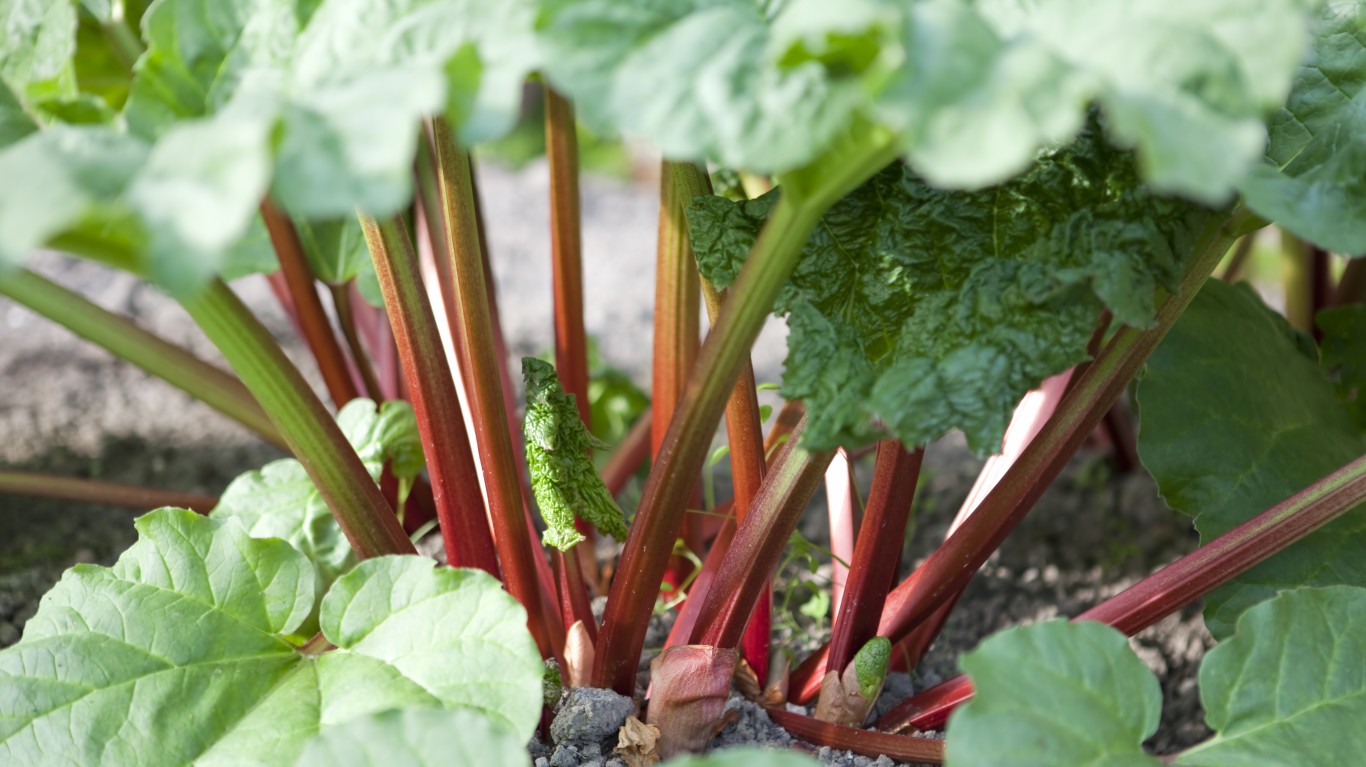
Rheum × hybridum or Rhubarb is a vegetable classified as a fruit in America. It’s grown as an edible plant. However, most people don’t consume the whole plant due to fears about toxicity from the leaves. Rhubarb contains a rather high concentration of oxalic acid, a toxic substance that can cause damage to the kidneys in high amounts. Rhubarb contains around 570–1,900 mg of oxalic acid per 100 grams. The leaves of the rhubarb plant have the highest concentration of oxalic acid, with the acid making up about 0.5–1% of the leaf. Thus, people typically avoid eating the plant’s leaf, instead consuming the stalks.
High concentrations of oxalic acid in the body can cause a condition known as hyperoxaluria, where oxalate is excreted in the urine. This condition can also cause calcium oxalate crystals to collect in the organs, such as the kidneys, where they will be passed as kidney stones. These crystals can cause severe and even fatal damage to the organs.
In mild cases of rhubarb poisoning, the patient may experience vomiting and diarrhea that clears up within a few hours. More severe cases may cause a sore throat, resulting in difficulty swallowing, nausea, and abdominal pain with vomiting and diarrhea. Death from rhubarb poisoning is rare since the average person would have to eat 5 kg of rhubarb leaves to die from the poisoning alone. However, acute kidney failure from excessive ingestion of rhubarb is possible and medically significant.
Tuna

Tuna is another food that’s pretty commonly consumed yet could have fairly serious effects if eaten too often. In the wild, tunas feed on smaller fish contaminated with mercury. Since mercury isn’t easy to pass through the body and excrete, the mercury builds up in the fish’s tissues. The mercury in the tissues doesn’t magically disappear when you catch and butcher the fish; it stays in the meat and enters your body when you consume it. Thus, the FDA recommends that you not consume tuna in high amounts or too often since it can cause mercury poisoning.
How much mercury is in the meat varies by tuna species but is generally higher than other commercially sold fish. Light tuna, normally bought canned, contains around 10.71 mcg of mercury per 3 oz, while bigeye tuna contains a whopping 58.87 mcg of mercury per 3 oz. Let’s take a look at how much mercury is in the different types of tuna by species.
| Light tuna | 10.71 mcg/3 oz |
| Skipjack tuna | 12.24 mcg/3 oz |
| Albacore tuna | 29.75 mcg/3 oz |
| Yellowfin tuna | 30.09 mcg/3 oz |
| Bigeye tuna | 58.87 mcg/3 oz |
Long-term mercury exposure can lead to brain cell death. This damage to your brain can cause impaired motor skills, logic, and concentration. Depression and anxiety are also more common in adults who have higher concentrations of mercury in their bodies. A study of 1,800 men showed that those who consumed the most fish and, thus, had the highest concentrations of mercury in their bodies were twice as likely to die from a heart attack or heart disease.
